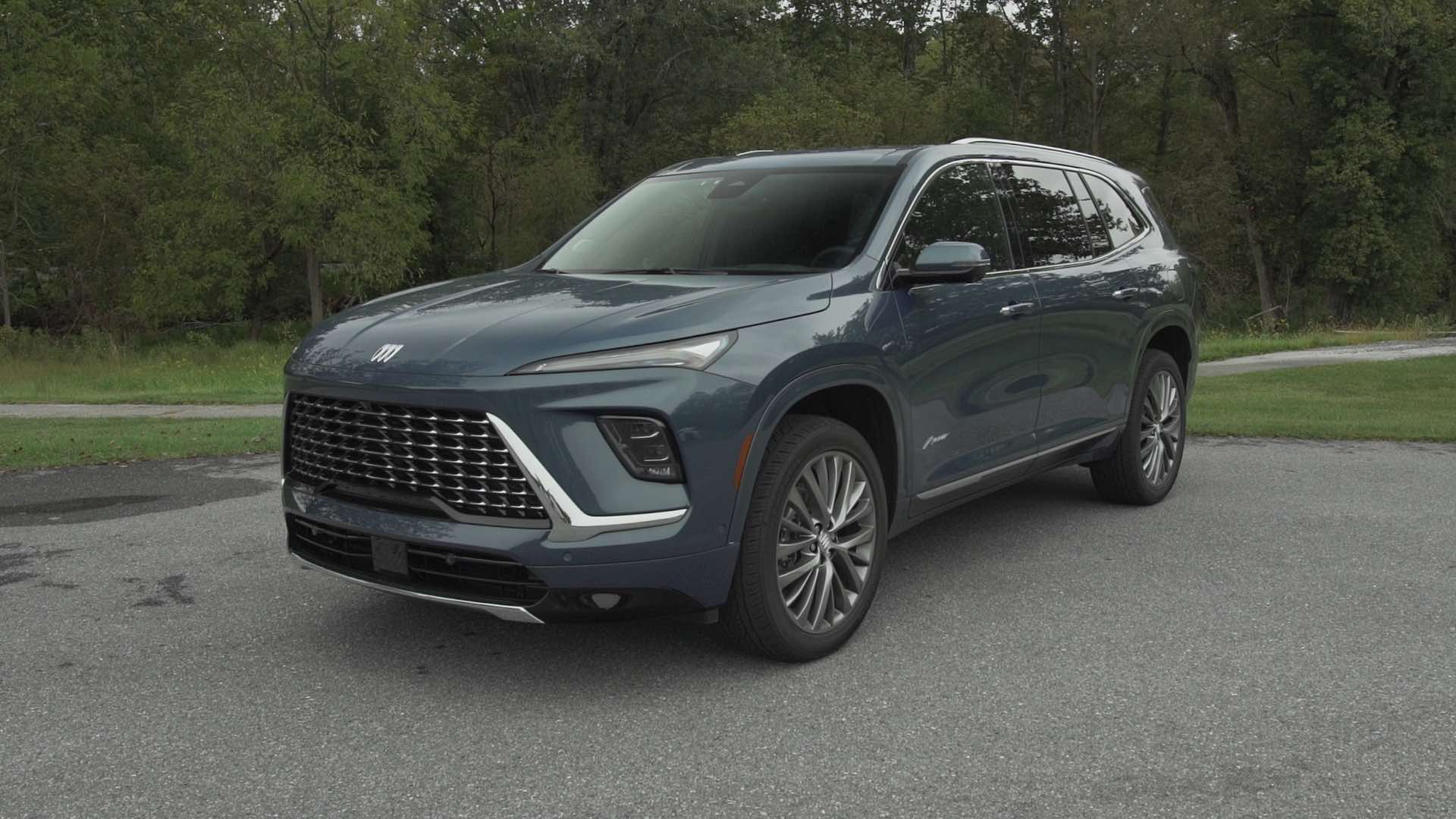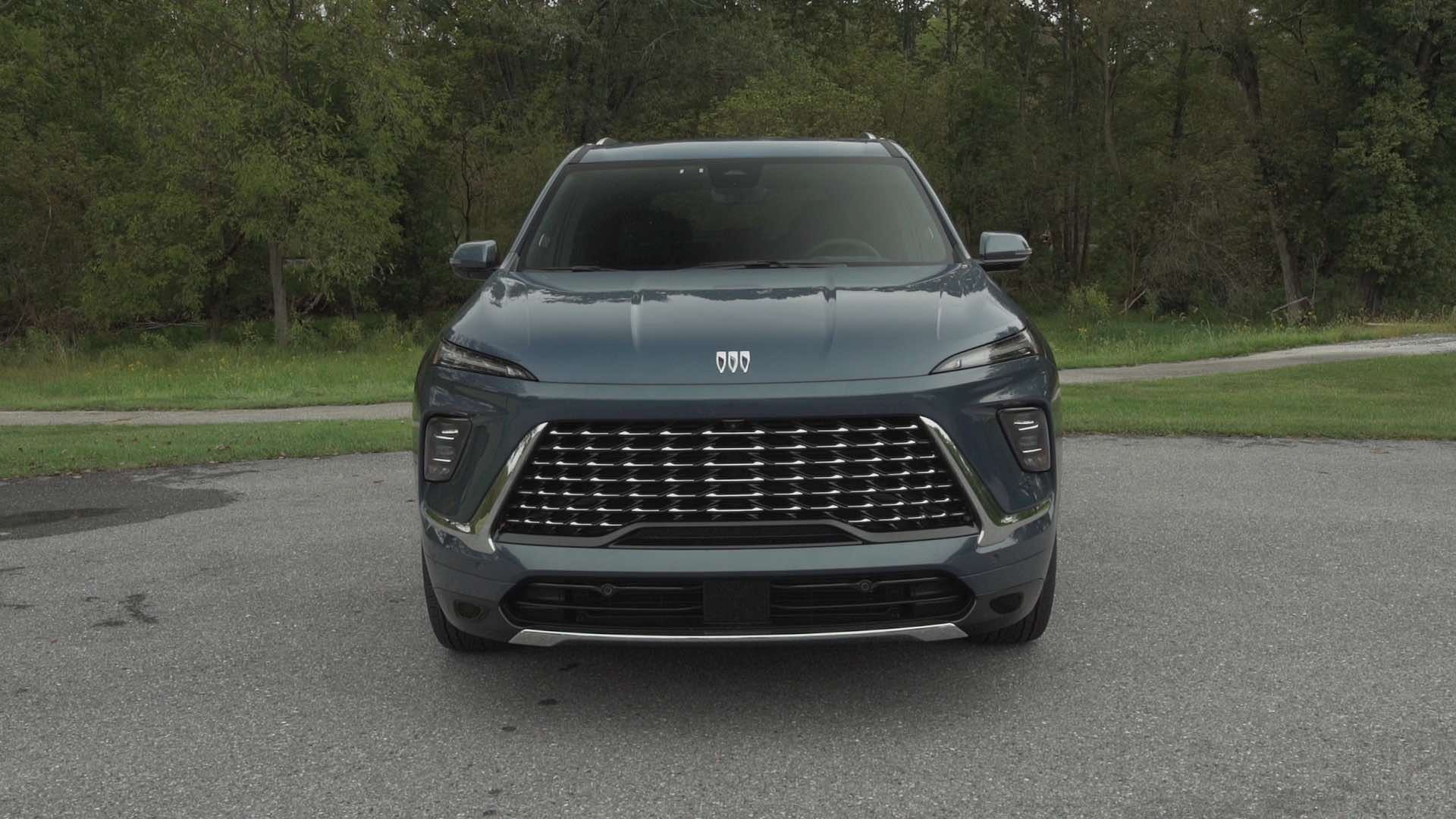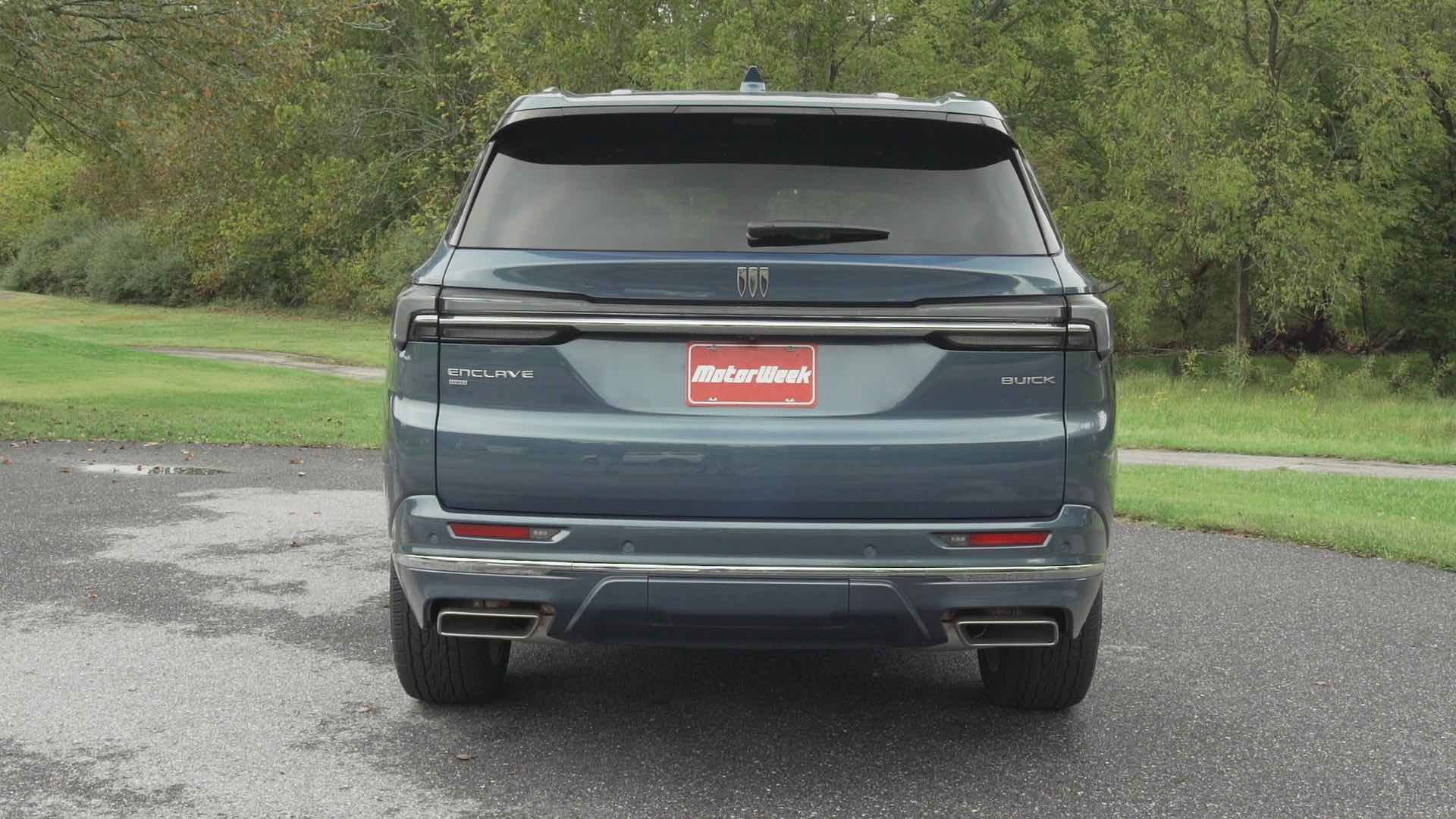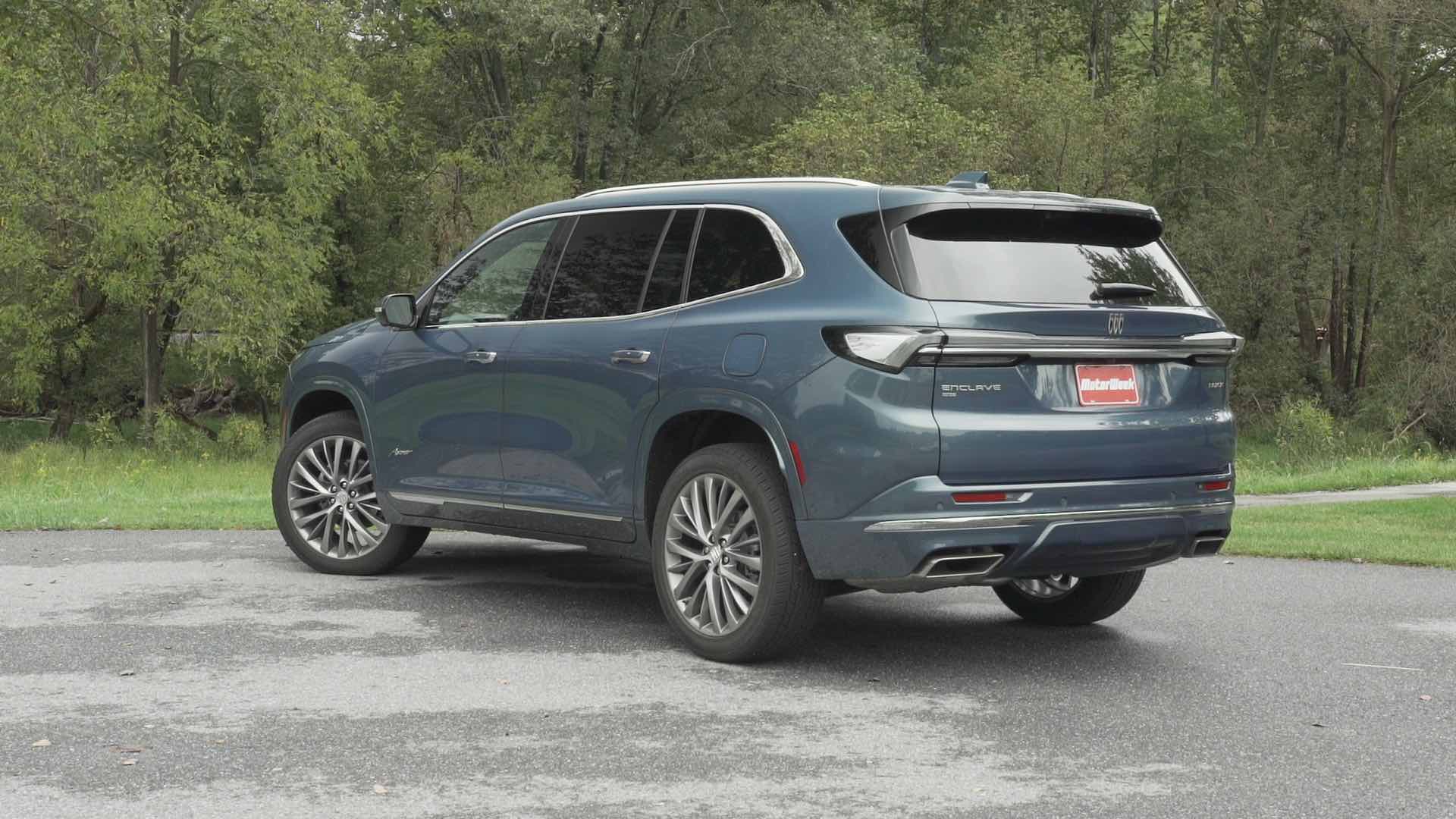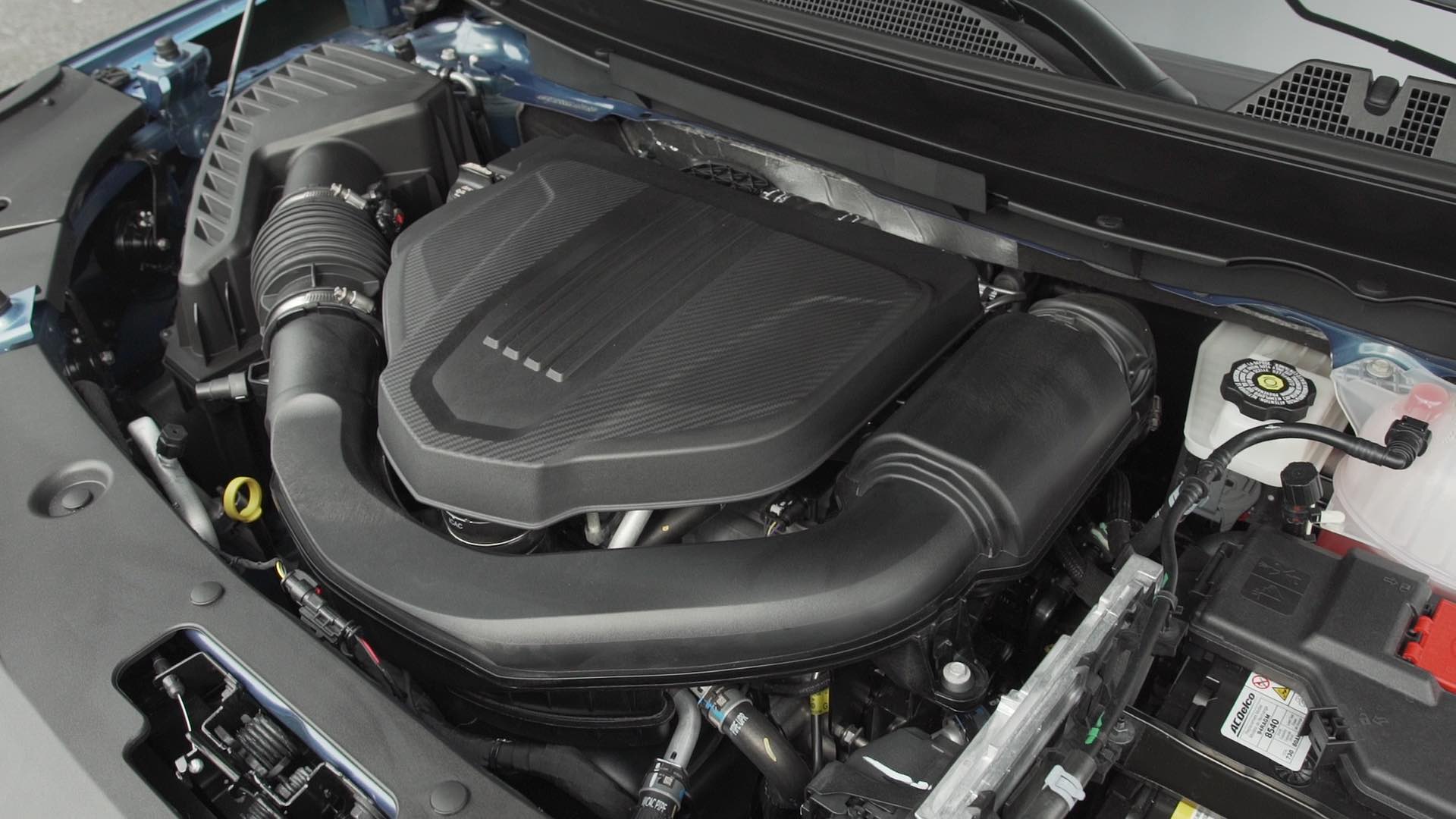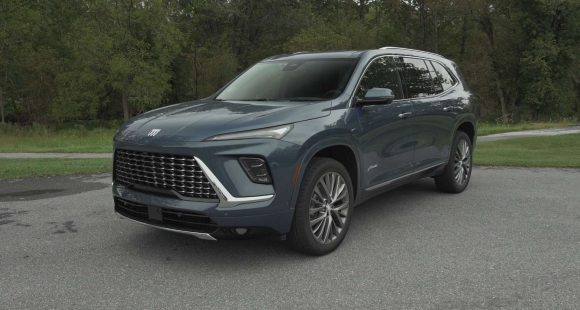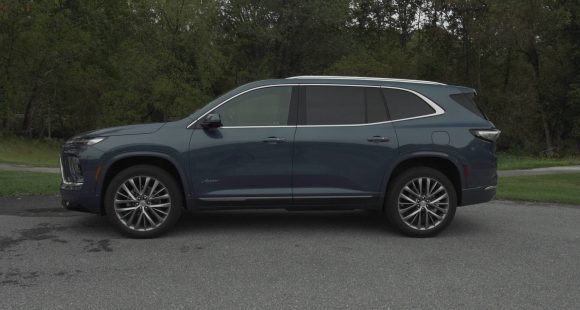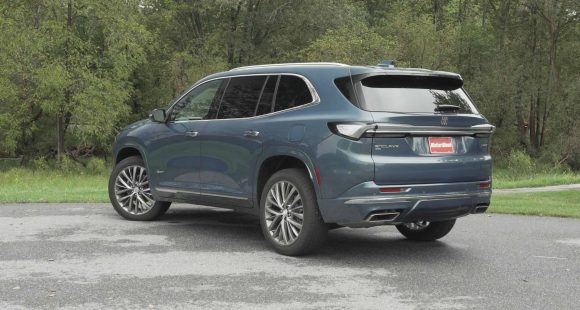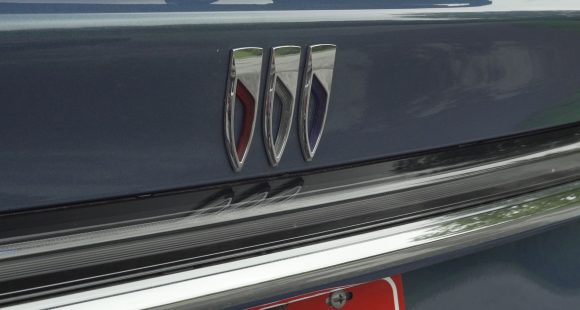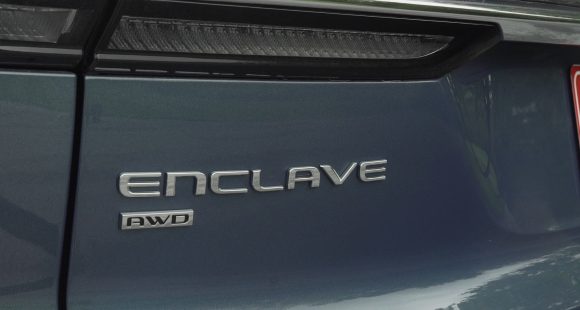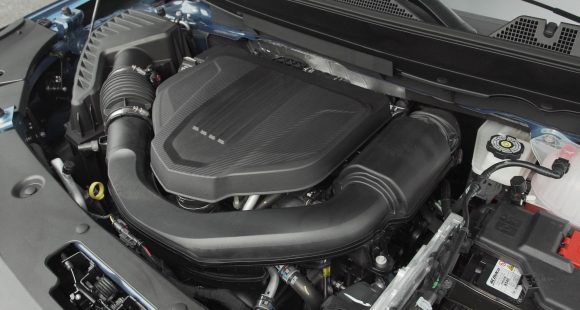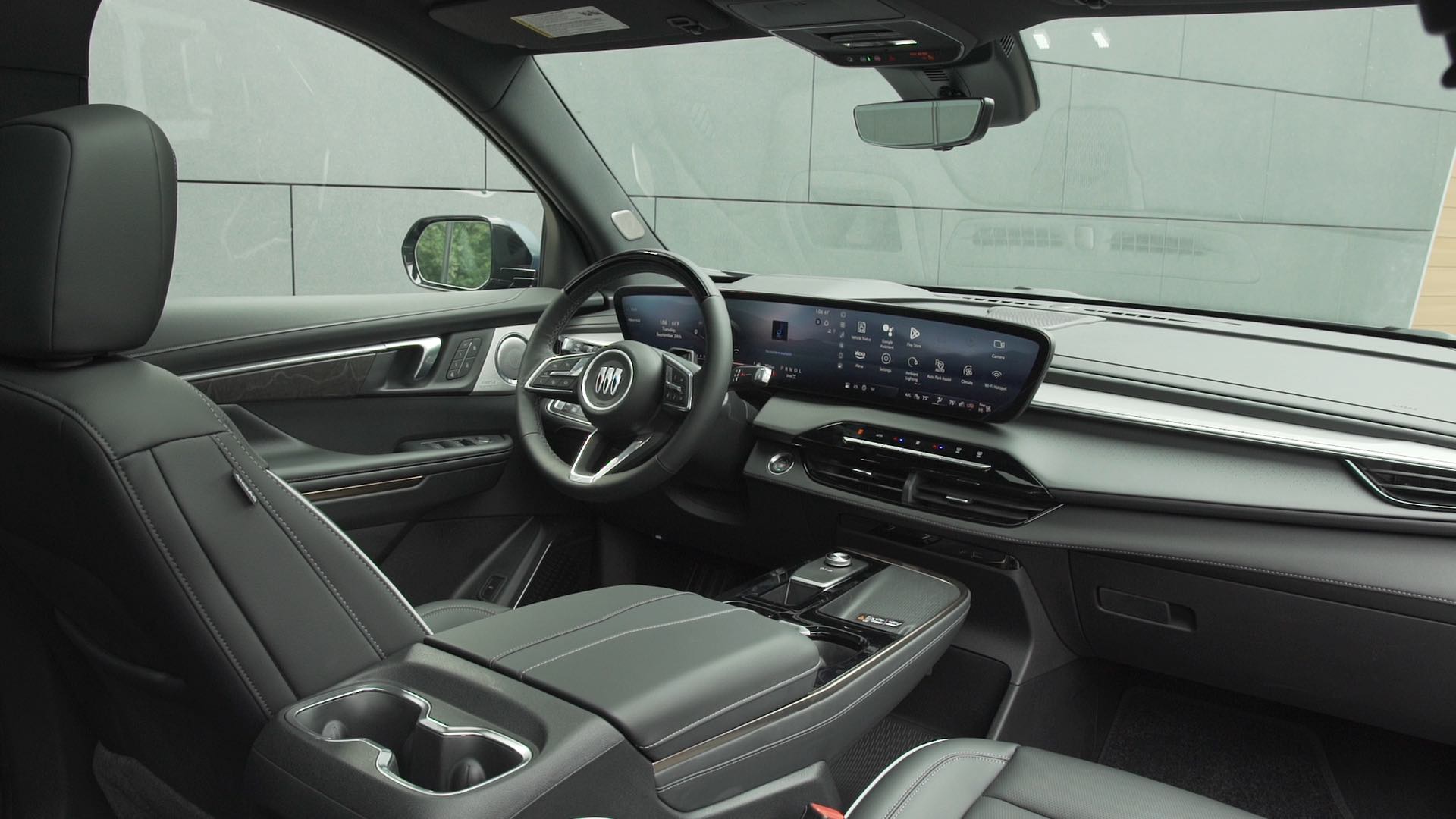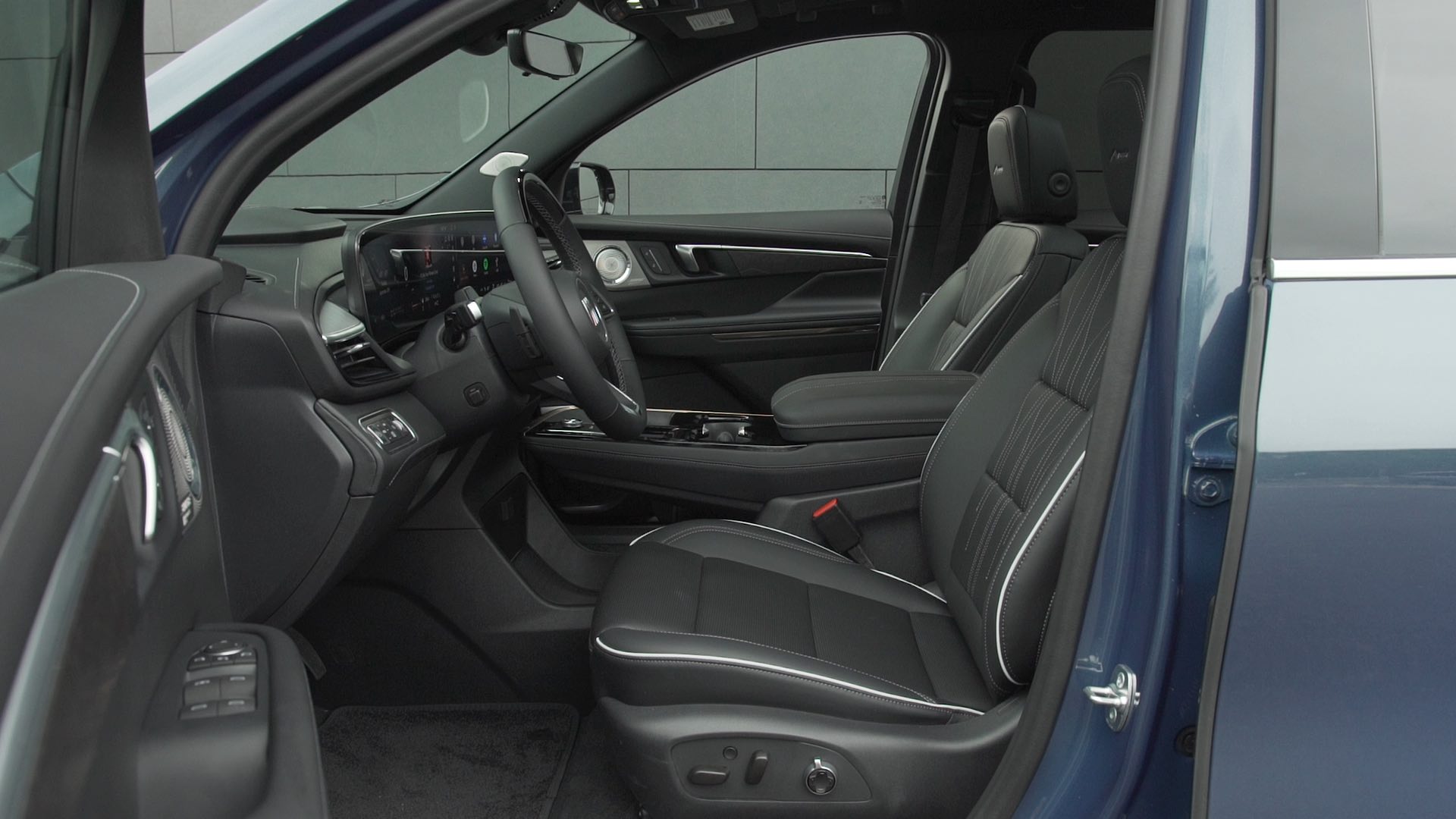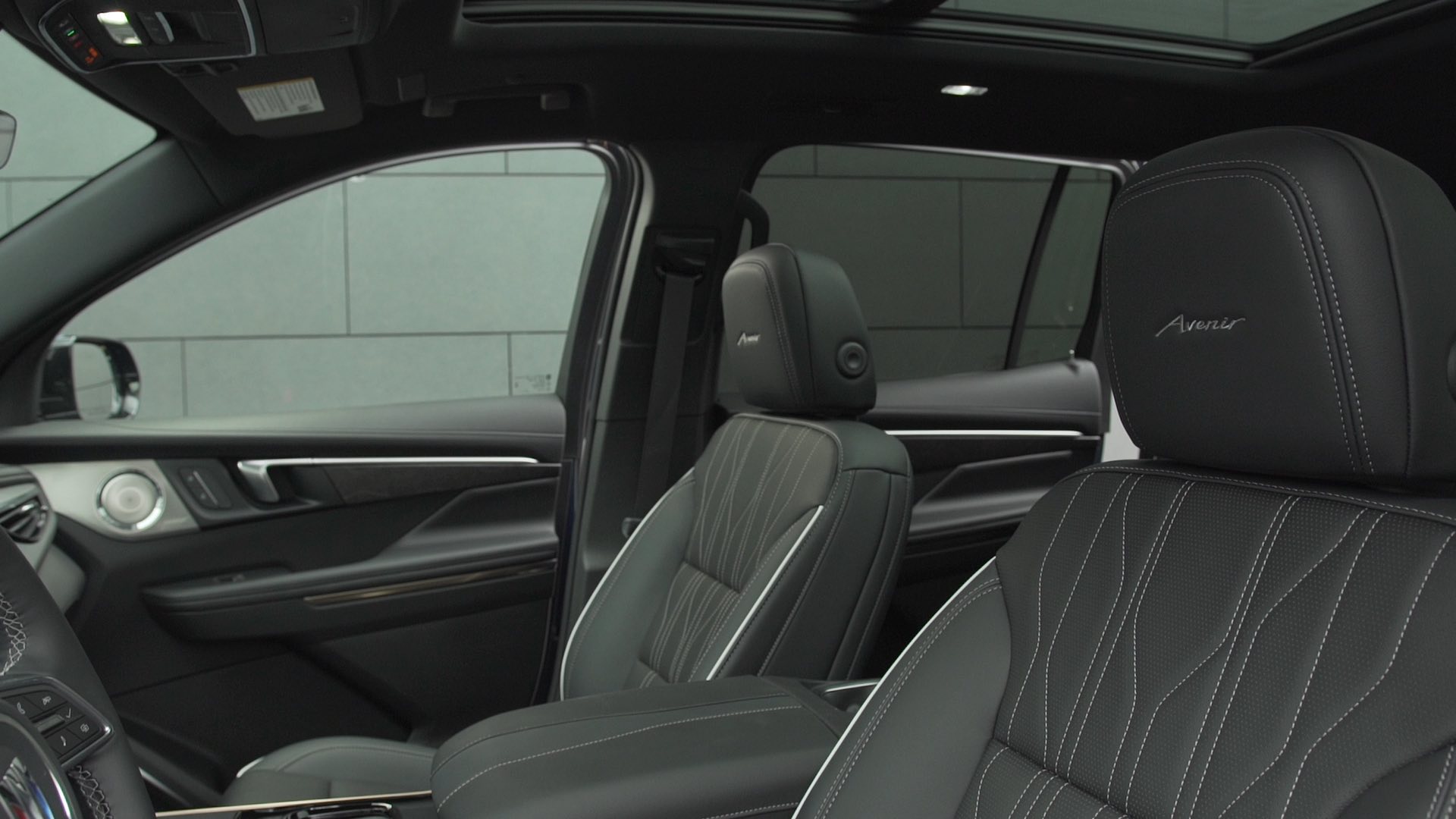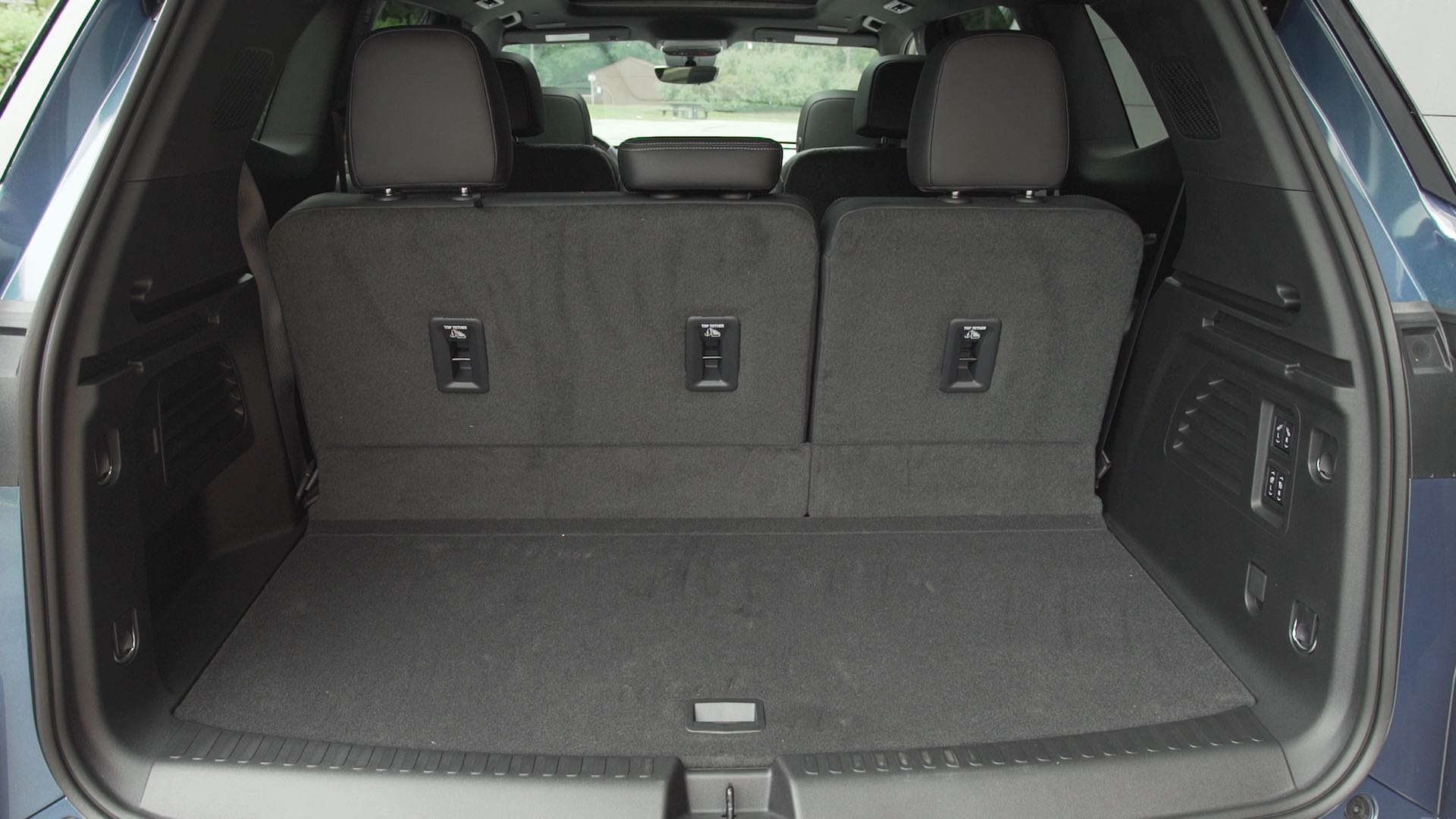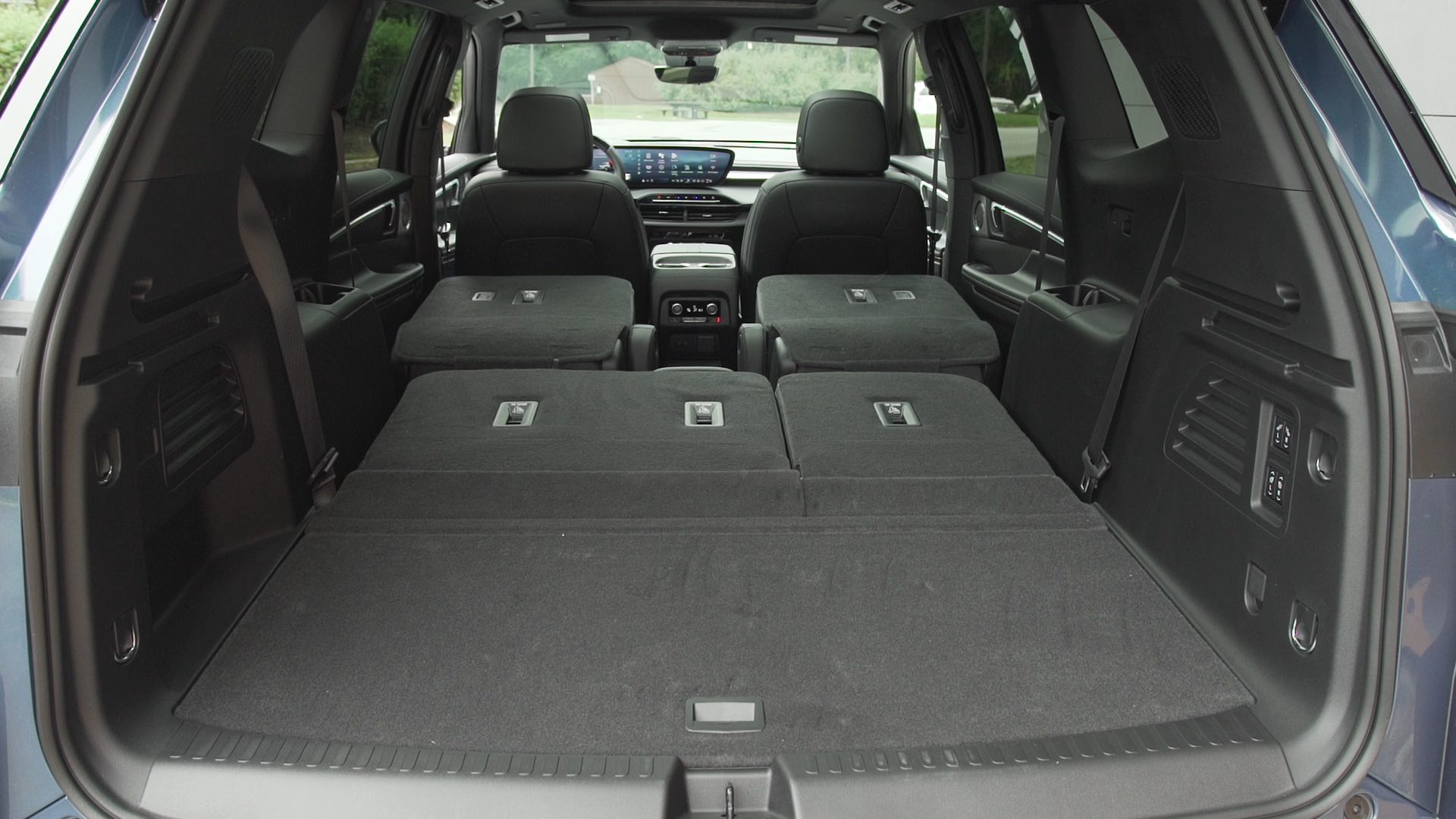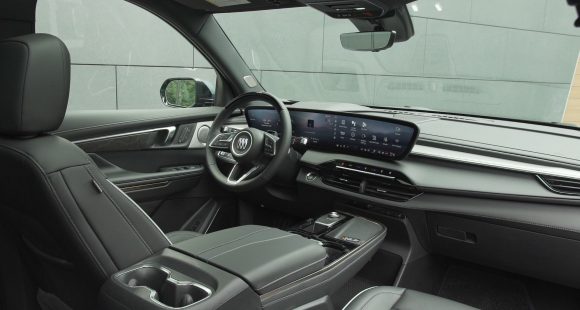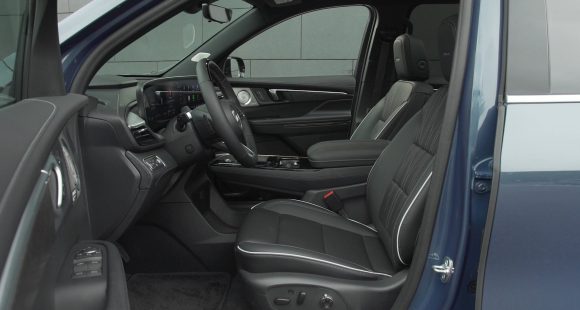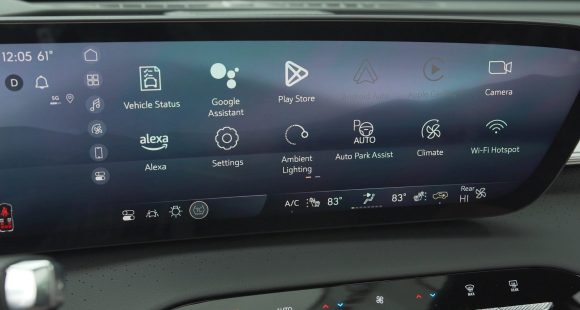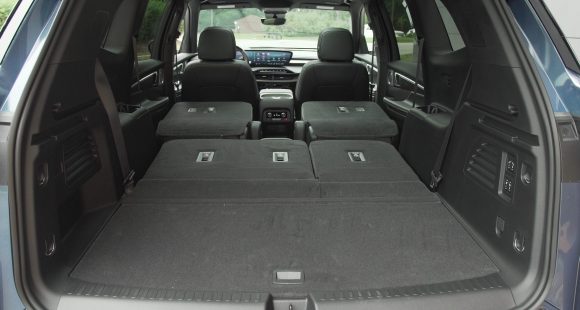2011 Ford Edge
For a brand known for its once top selling body-on-frame explorer SUV, the arrival of the 2006 Ford Edge midsize crossover utility really raised eyebrows. But Ford was just responding to the reality of surging gas prices and a flood of lighter, more efficient CUVs from import rivals. So, the Edge was a gamble that paid off. Now, Ford is doubling down with a mid-cycle edge revamp of the Edge. So let’s see if it’s again a winner.
Typical of what car makers call a freshening, the 2011 Edge maintains most of its exterior sheet metal, with major changes largely limited to front and rear fascias.
But, the addition of a big drop-jaw Ford-truck style grille, more expressive headlamp housings, and beefier wheels, does deliver a fresh impression, and makes the modern stance of the Edge even more so.
But, Ford smartly paid a lot more attention to upgrading the interior of the Edge. The instrument panel is improved in style, in fit and finish, with softer materials. Taurus influence is unmistakable.
Our well-equipped Edge Limited also included the latest Sync system which controls climate, stereo, navigation, and other functions.
Ford’s Sync voice recognition system has now morphed into MyFord Touch and it has three screens: two colorful info screens inside the gauge cluster, and a large touch screen in the center dash. Now it looks very much like a big smart phone display.
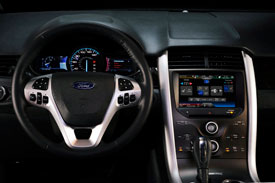 And like a smart phone, there’s no tactile feel, so you have to look at the screen when you actually want to make a touch selection. We find that distracting—and it’s also annoying, especially when the system locks up like it did for us.
And like a smart phone, there’s no tactile feel, so you have to look at the screen when you actually want to make a touch selection. We find that distracting—and it’s also annoying, especially when the system locks up like it did for us.
Now there are redundant controls for stereo and climate below, but they’re very sensitive, so again you have to look at what you’re touching.
On the other hand, Sync’s voice command system and Bluetooth connectivity are improved, but they’re still just a little fussy.
The two gauge screens are controlled by five-way switches on the steering wheel. Of all the controls, they are the most intuitive to use.
Available SD-card based navigation adds some neat tricks, too, like buildings appearing in 3D. But the best news here is the addition of SYNC TDI, an On-Star-like voice-prompt navigation feature.
Systems like Sync and MyFord Touch may very well be the future of automotive controls. Still, we also hope efforts continue to make voice command systems more intuitive, since you don’t have to take your eyes off the road to use those.
Edge remains a five-passenger crossover. The new front seats are more comfortable but could still use more lateral support.
Ford’s unique door keypad is standard on all but base trim. Blind Spot Monitoring is an option.
 Rear seat space and comfort remain excellent, even for six-footers. That still leaves room for 32.2 cubic feet of cargo space behind a large opening hatch. And, folding the seats down brings that space to a competitive 68.9 cubic feet.
Rear seat space and comfort remain excellent, even for six-footers. That still leaves room for 32.2 cubic feet of cargo space behind a large opening hatch. And, folding the seats down brings that space to a competitive 68.9 cubic feet.
Base power for the Edge is still a 3.5-liter V6. But it’s smoother, with 285 horsepower, up 20, and 253 lb-ft of torque, up three.
New is the Mustang’s 3.7-liter V6 in the Edge Sport with 305-horsepower and 280 lb-ft of torque.
Front-drive six-speed automatics are fitted to both sixes with Sport trim adding paddle shifters. All-wheel drive adds new Hill Start Assist.
Still to come is an Edge Ecoboost, with a direct-injected, turbocharged 2.0-liter I-4. But, even without Ecoboost, Edge made gains in fuel economy.
Our front-drive 3.5 has government fuel economy ratings of 19 city, 27 highway. That’s up one in the city and two on the highway. On our test loop, we averaged 22.8 mpg of regular.
The Edge’s moderate Energy Impact Score of 15.6 barrels of oil per annum, and 8.5-ton Carbon Footprint, mirror those of the Toyota Venza V6.
Edge track performance was well above par: zero to 60 in 7.1 seconds, and the quarter mile in 15.7 seconds at 93 miles per hour. Power was best in the upper revs.
There was a fair amount of body roll through the slalom, but it had no notable affect on stability. The Edge Sport with its 22-inch wheels does even better.
The all-disc braking system is also new, from booster, to calipers, to first time Brake Assist. Our average 60-to-0 stopping distance of 129 feet was far better than the 146 feet in our previous test. Still, the 2011 Edge exhibited moderate fade and nose dive.
The Edge is a solid long distance highway tourer. Improved sound insulation, including acoustic glass, complement powertrain tweaks for impressively low noise at speed.
Pricing for a base Edge SE starts at $27,995. Our front drive Limited begins at $34,995, and the Sport at $36,995. All-wheel drive adds $1,850 more.
The improvements in the 2011 Ford Edge are extremely well-thought out. More tech, more comfort, and more all-around performance, without compromising its already strong five-passenger utility traits. It’s a perfect pairing for the all-new seven-passenger Explorer due soon. And that will make even more of a competitive edge for Ford’s rivals to worry about.
Specifications
- Engine: 3.5-Liter V6
- Horsepower: 285
- Torque: 253 Lb Feet
- 0-60 MPH: 7.1 Seconds
- 1/4 Mile: 15.7 Seconds @ 93 MPH
- 60-0 MPH: 129 Feet
- EPA: 19 MPG City/ 27 MPG Highway
- Mixed Loop: 22.8 MPG
- Energy Impact: 15.6 Barrels Oil/Yr
- CO2 Emissions: 8.5 Tons/Yr
2025 Buick Enclave
Buick’s Biggest Utility Gets More Premium Look, Less Premium Powertrain
Buick is now an all SUV brand with the three-row Enclave sitting at the top of their lineup. And for this all-new third generation, it looks like Buick has finally given it the true flagship treatment it deserves. Reason enough for us to see what else new this posh performer has in store.
Don’t think of this 2025 Buick Enclave as just a new third generation of Buick’s largest three-row SUV, but more of a total reboot for a luxury segment pioneer. Part of that reinvention is swapping out the 3.6-liter naturally aspirated V6 engine, that has been the heart of this large crossover since it arrived on the scene for 2008, for a new 2.5-liter turbocharged four-cylinder.
Though using two fewer cylinders, it rates 18 more horsepower at 328. The gain in torque is even greater, climbing from 266 to 326 lb-ft.
Power from a start and when tooling around town feels pretty good, but you do notice that engine working hard under the hood; there is more engine noise and it’s not as smooth as many competitors who have also made the switch to turbo-four power. Max towing rating remains at 5,000 lbs. The new standard automatic transmission loses a gear, dropping from nine to eight, a simplifying move we applaud. All-wheel drive is a $2,000 option with all trims.
The Enclave rides on the same front-wheel-drive based chassis that supports the Chevrolet Traverse and GMC Acadia. It remains the most luxurious of the three, though all have made big upward strides. And that luxurious feel is very evident inside where things appear special without flaunting it. Materials are vastly improved over the last gen, especially in top Avenir trim which is the choice for most Enclave buyers.
Front seats are very comfy, well suited for long days of highway travel. It’s hard to miss the 30-inch ultra-wide display, similar to Cadillac’s. It is big, but not intimidating as operation is very logical and you can easily configure things as you want them, including bringing the nav screen up full in front of the driver.
Front seats are very comfy, well suited for long days of highway travel.
Between the seats is a very substantial console with lots of storage space and standard wireless phone charging. There is definitely room for full-size adults in all three rows of seating. Big, plush captain’s chairs with all trims for the second row; and a less plush but still comfortable three-place third row.
GM’s Super Cruise has now made it to Buick’s lineup, available as a standalone package for any trim. It remains a favorite of ours for hands-off highway cruising. Despite feeling adequately powered on the street, the Enclave’s turbo-four felt a little out of its element at our Mason Dixon Dragway test track. There was very little jump off the line, just a slow wind up to 60 of 8.0 seconds, with the quarter-mile completed in 16.0 seconds flat at 92 mph.
We could really feel the Enclave’s weight in our handling course, about 150-lbs. over last year, even with less motor under the hood. But there was very little body roll, and no excessive oversteer or understeer. In panic braking runs, there was good feel through the pedal, and solid stops from 60 averaging a fine 111 feet.
To all of our eyes, the Enclave is bigger yet much better looking than before. Now more sophisticated using Buick’s PURE philosophy which emphasizes Purity in design, Unexpected details, Refined finishes, and Exceptional execution.
With all-wheel drive, Government Fuel Economy Ratings are 19 City, 24 Highway, and 21 Combined; we managed a great 24.9 mpg of Regular. That’s a slightly below average Energy Impact Score, consuming 14.2 barrels of oil yearly, with 7.0 tons of CO2 emissions.
No more Essence or Premium Enclaves, as the new gen brings new trim names along with it; the base option now being Preferred which starts at $46,395, and unless you choose white, you’ll be paying extra for all exterior colors. Just a short step from there to the Sport Touring for $48,795, and then a much bigger bounce up to Avenir at $59,395.
With so many big utes now aimed at luxury and near luxury buyers, it’s getting harder and harder for Buick to stand out. Being an all-utility brand, with one of the freshest lineups in the industry, will no doubt help. The 2025 Buick Enclave is a very stylish, well-equipped, well executed large three-row crossover that’s priced right.
Specifications
As Tested
- Engine: 2.5-liter turbo-4
- Transmission: 8-speed automatic
- Horsepower: 328
- Torque: 326 lb-ft.
- EPA: 19 City | 24 Highway | 21 Combined
- 0-60 mph: 8.0 seconds
- 1/4 Mile: 16.0 seconds at 92 mph
- Braking, 60-0 (avg.): 111 feet
- MW Fuel Economy: 24.9 mpg (Regular)








